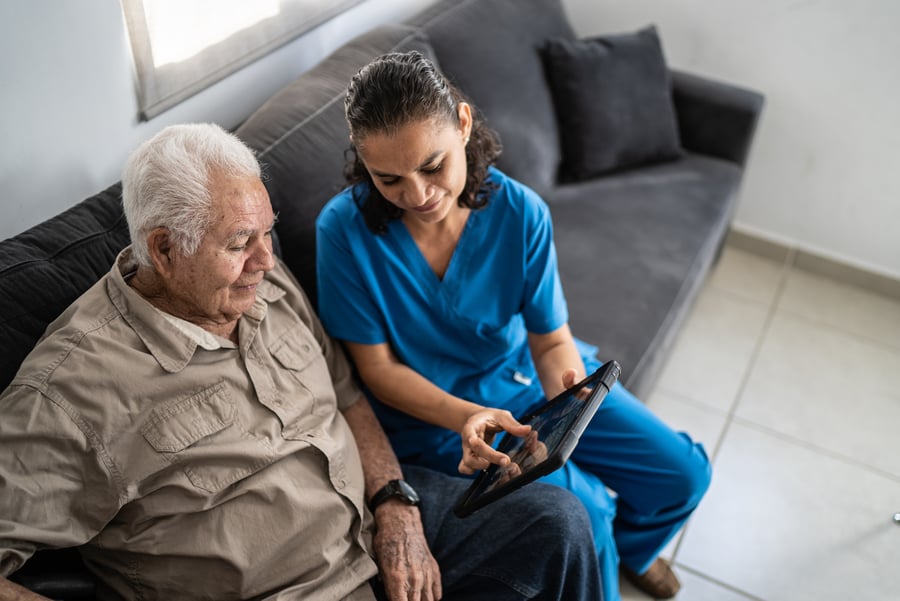
The disparity in access to the internet—widely referred to as the digital divide—is significantly affected by geography and poses a challenge for many federally-qualified health centers (FQHCs). A recent report found that over 22% of rural Americans and almost 30% of Americans in tribal lands lack reliable and affordable high-speed internet.
In this article, we’ll cover strategies providers can explore to overcome these digital inequalities and pave the way for equitable access to digital health.
Key strategies for fostering digital health equity
For healthcare organizations dedicated to underserved communities, the digital divide may appear to be an insurmountable barrier. Yet, within this challenge lies an opportunity to transform healthcare delivery. By transitioning from acknowledging the impediments to enacting impactful solutions, FQHCs can spearhead the expansion of digital access, elevate patient digital literacy, champion telemedicine, and cultivate a workforce adept at navigating the digital health terrain.
Digital infrastructure advocacy
Policy advocacy by healthcare providers can play a critical role in overcoming the digital divide. Healthcare organizations can urge local governments to prioritize digital equity in healthcare as part of their broader public health strategy. This advocacy can include calls for investments in infrastructure, the creation of supportive regulatory environments, and the promotion of public-private partnerships.
In addition, reaching out to telecommunication companies to highlight digital inequalities can encourage investment in 5G networks and broadband internet coverage, which forms the bedrock of digital health services.
Elevating digital literacy
Beyond mere connectivity, digital literacy is critical. Patients need to understand the benefits of digital health tools and how to access them. Healthcare providers can facilitate this education through outreach programs, patient counseling, and collaboration with community leaders and organizations.
FQHCs can consider creating educational programs to empower their patients to navigate digital health platforms confidently. Healthcare organizations that work with existing community infrastructure, such as libraries and community centers, can highlight internet access and create relationships that encourage patient engagement with available technology.

Telemedicine expansion
The pandemic proved that telemedicine can be a powerful tool to address disparities in access to healthcare. At the height of COVID, an average of 30% of rural health center visits were virtual. By leveraging telehealth, providers can reach patients irrespective of their location.
After identifying locations with internet access, such as schools, libraries, and government buildings, FQHCs can work with organizations to make private rooms accessible where patients can meet virtually with providers. In addition to expanding access to care, these partnerships are yet another opportunity to create strong community ties that can disseminate information about care options and opportunities.
Workforce development
Healthcare workers, particularly in remote areas, need continuous training to navigate the rapidly changing digital health landscape. Recent research found that 83% of clinicians think that training is needed to keep pace with health IT advances. This involves instruction in the use of digital health tools and platforms, patient engagement technology, data security, and privacy. Equipping healthcare workers with the skills to leverage digital health tools is essential for the successful integration of these technologies into clinical workflows.
Not to be overlooked is the building of a local workforce capable of maintaining a digital health infrastructure. Public health strategies need to include plans to build a sustainable source of skilled workers that can maintain a digital health infrastructure.
Healthcare providers that support these programs can benefit not only from a stronger infrastructure, but also from the skilled workforce they produce.
Beyond the Divide: Envisioning a Healthier Future
Overcoming the digital divide and its resulting disparities in healthcare access has the potential to redefine healthcare and ensure everyone, everywhere, has access to high-quality healthcare.
Through mindful planning, dedicated effort, and unwavering commitment, FQHCs can play a pivotal role in reshaping healthcare delivery. Overcoming digital barriers opens the door to a future where high-quality healthcare is universally accessible, ensuring a healthier tomorrow for every community, regardless of their zip code.

